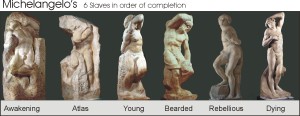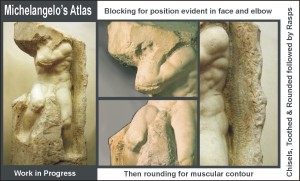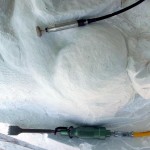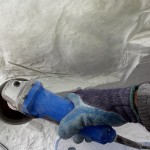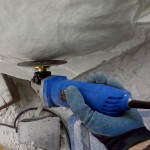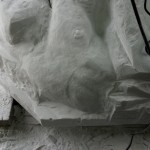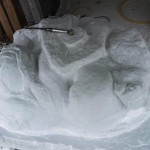I have a special place in my heart for Michelangelo’s unfinished works… most abundantly found in the collection of statues partially carved for Pope Julius II Tomb. The series of six Slaves, to varying degrees, show step by step the masters creative thought, his planning and execution.
From the Awakening Slave still trapped within it’s megalith, through to the perfection of the completed Dying Slave, we see the unison of a singular method. Michelangelo’s gift from God, his representation of perfection within the human form. Classical Realism.
Of these, Atlas is the finest example of Michelangelo’s method. His effective use of available stone. Blocking techniques used to anchor his modelled concept within the mass. As seen in the partial carving of the face and initial rough cutting of the elbow. This then is followed by the rounding of the stone; again evident in the comparative elbow and mid arm. This was done with the point, toothed then rounded chisel, with the rasp smoothing out the surface.
Its no wonder how many of his contemporaries and today’s art historians fall under the spell of Michelangelo’s ‘il terrible’ and consider his work as ‘non finito’. The master’s overpowering skill and creative flow lend even unfinished work the air of completion.
As I have mentioned earlier, Michelangelo would never have wanted his work revealed until it was fully complete. The mystery of creation preserved. However, by studying the Slaves as a series, we now have the privilege to peak behind the curtain and see how hard planning, hard work and artistic nuance can shape a thing of beauty.
Of course, Michelangelo was exceptionally talented, and we who are less adept may fear to follow… but then nothing would get done… so I continue to chip away.
Now that my stone has been blocked, it is ready for rounding. Chisels and rasps are still used today, but their speed has increased with mechanization.. Pneumatic hammer now hammer the chisel and drills now spin the rasp. Though hand tools are still best for quick adjustment, and later for fine or sensitive work.
The purpose is to round out our blocked statue; removing angled edges and revealing a rounded form. You may want to hide this work from curious eyes… my favourite comment from a well intentioned neighbour was “and what exactly am I looking at?” You may know where your going, but others may be lost in the mix. Just think of this as the awkward growing phase… the ugly duckling.

